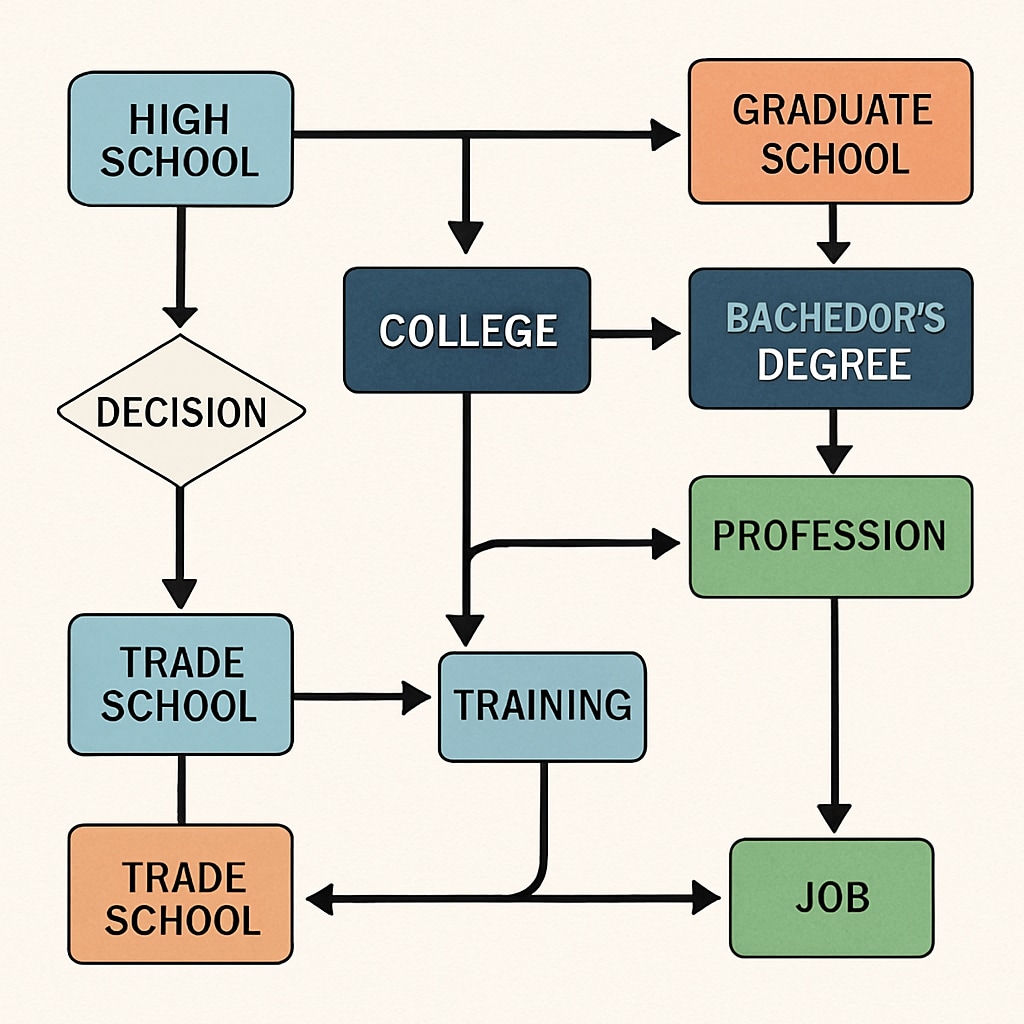For individuals who have left college, the path forward can be daunting. Questions surrounding academic and career decisions often arise, as well as how to balance personal interests with societal expectations. These crossroads of “academic education, career planning, and professional choices” require careful thought and strategic planning. In this article, we will explore the challenges faced by those who have left college and lay out a framework for making informed and values-aligned decisions.
Understanding the Challenges of Dropping Out
Leaving college is not just an academic decision—it often comes with emotional, financial, and social implications. Whether it was due to personal challenges, financial constraints, or a lack of alignment with the chosen field, stepping away from formal education can feel like a setback. However, this period can also serve as an opportunity for introspection and a chance to redefine your goals.
For example, many college dropouts struggle with feelings of failure or societal pressure. At the same time, they may also question whether returning to education is necessary or if diving directly into a career is the right move. By addressing these concerns systematically, individuals can better position themselves for success.

Balancing Personal Interests with Societal Expectations
One of the greatest dilemmas for those who leave college is navigating the tension between personal aspirations and external pressures. Society often emphasizes traditional metrics of success—such as earning a degree or climbing a corporate ladder—while individuals may have unique passions and paths in mind.
To achieve this balance, consider the following steps:
- Identify your core values: What truly matters to you? Is it financial stability, creative fulfillment, or work-life balance?
- Research alternative pathways: Technical certifications, entrepreneurial ventures, or trade schools may align better with your goals.
- Set realistic expectations: Success may take longer on non-traditional paths, but it can be equally rewarding.
Career development resources provide insights into how individuals can shape their journeys in unique ways, even without a formal degree.
Building a Systematic Decision-Making Framework
Making decisions about your academic and professional future should not be a rushed process. A systematic framework can help clarify options and prioritize what matters most. Here’s a step-by-step approach:
- Assess your situation: Reflect on why you left college. Was it financial, personal, or academic? Identifying the reasons will help avoid repeating the same challenges.
- Define your goals: Are you looking for immediate employment, long-term career growth, or a return to education?
- Explore your options: Research industries, speak with professionals, and evaluate the feasibility of returning to school or pursuing certifications.
- Create an action plan: Break down your goals into manageable steps, such as enrolling in a course, applying for internships, or building a portfolio.
As an example, this Britannica article on skills and training offers valuable insights into alternative education and workforce preparedness strategies.

Conclusion: Embracing Your Unique Journey
Ultimately, leaving college doesn’t mean the end of your educational or professional journey. On the contrary, it can be the beginning of a path that is more aligned with your true self. By balancing personal interests, considering societal expectations, and adopting a structured decision-making framework, you can navigate this crossroads with confidence.
Remember, success is not defined by a single path. Whether you choose to return to education, pursue a different professional route, or embark on a creative venture, the most important factor is that your choices align with your values and aspirations.
Readability guidance: Use short paragraphs and the listed points to summarize key ideas. Distribute transitional words like “however,” “in addition,” and “for example” evenly throughout the text to enhance flow. Ensure a balance between active and passive voice for clarity and engagement.


